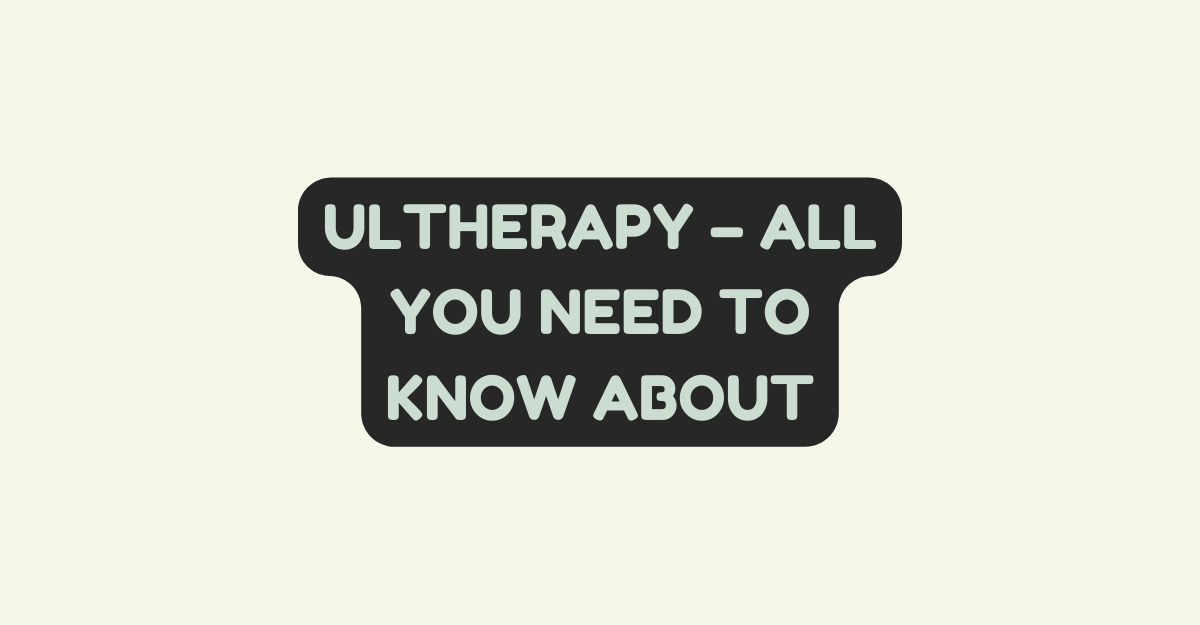
ULTHERAPY – All You Need to Know About
Ultherapy is a noninvasive cosmetic surgery that uses ultrasonic technology to lift and tighten the skin. It is sometimes referred to as a non-surgical facelift, as it provides an alternative to typical surgical procedures with less downtime. In this guide, we will look at the many varieties of Ultherapy, how the operation works, and the benefits and drawbacks of this new cosmetic treatment.
Ultherapy has gained popularity in the cosmetic business as a non-invasive method that claims to lift and tighten the skin. Ultherapy New York is a cutting-edge alternative for people seeking rejuvenation without the need for surgery in New York, where beauty standards are high and trends are continuously evolving. Ultherapy uses concentrated ultrasonic energy to encourage collagen creation deep under the skin, which results in firmer, more youthful-looking skin over time.
Ultherapy has the capacity to precisely target particular regions like as the brows, neck, and jawline, which is one of its primary benefits. This enables personalized therapies that are tailored to each patient’s specific needs, giving the best possible results. Furthermore, Ultherapy has less downtime than surgical procedures, making it an appealing alternative for busy New Yorkers eager to improve their looks without upsetting their schedules.
In a city like New York, where aesthetics play an important part in social dynamics and personal confidence, Ultherapy offers a distinct combination of creativity and efficacy that appeals to people seeking natural yet obvious improvements in their looks. Whether you’re fighting aging or simply looking for a slight lift, Ultherapy provides a new approach to cosmetic modification that appeals to those looking for safe and dependable options in the city.
Types of Ultherapy:
1. Ultherapy for Facial Rejuvenation:
Ultherapy for face rejuvenation addresses the forehead, brows, cheeks, jawline, and neck. By delivering targeted ultrasonic energy deep into the skin’s layers, it promotes collagen formation, resulting in tighter, firmer skin with a more youthful appearance. This sort of Ultherapy is popular among those who want to reduce the indications of aging without surgery.
2. Ultherapy for Body Contouring:
Ultherapy may be utilized for both face rejuvenation and body sculpting. This form of Ultherapy focuses on the belly, thighs, arms, and buttocks, helping to tighten and firm loose skin. It is frequently sought after by people who have lost weight or become pregnant and want to enhance the look of drooping skin in these places.
3. Ultherapy for Brow Lift:
Ultherapy can precisely raise and tighten sagging brows. This form of Ultherapy works by stimulating collagen production around the brow bone, creating a mild lifting effect that opens up the eyes and rejuvenates the overall look of the face. It is an ideal choice for people who have mild to severe brow ptosis and want a non-surgical treatment.
Procedure for Ultherapy:
1. Consultation and Assessment:
Ultherapy normally starts with a consultation with a trained practitioner. During this appointment, the practitioner will evaluate the patient’s complaints, discuss treatment objectives, and decide whether Ultherapy is the best choice. They will also explain the operation thoroughly and answer any queries the patient may have.
2. Treatment Session:
The actual Ultherapy treatment session involves the following steps:The skin is cleaned, then ultrasonic gel is administered to the treatment site.
- The Ultherapy device is designed to provide targeted ultrasound energy to specific depths beneath the skin.
- The practitioner watches the treatment’s progress and modifies the settings as needed to address particular areas of concern.
- The therapy session usually lasts between 30 minutes and 2 hours, depending on the size and number of regions being treated.
3. Recovery and Results:
Following Ultherapy treatment, patients may suffer redness, swelling, or discomfort in the treated region. However, these side effects are generally modest and transient, lasting from a few days to a few weeks. Ultherapy outcomes generally improve over time as the body’s natural collagen synthesis rises, with peak effects often noticeable after 2 to 3 months of treatment.
Pros and Cons of Ultherapy:
1. Pros:
- Non-invasive procedure with minimal downtime
- Stimulates natural collagen production for long-lasting results
- Customizable treatment options for various areas of the face and body
- No anesthesia or incisions required, reducing the risk of complications
- Can be performed as a standalone treatment or in combination with other cosmetic procedures for enhanced results
2. Cons:
- Results may vary depending on individual factors such as skin laxity and response to treatment
- Multiple treatment sessions may be needed to achieve desired results
- Some patients may experience temporary discomfort or swelling during or after treatment
- Ultherapy is not suitable for individuals with extensive skin laxity or severe sagging, who may require more invasive surgical procedures
- Cost of treatment may be higher compared to other non-invasive cosmetic procedures
Conclusion:
Ultherapy is a safe and effective non-invasive treatment option for those wishing to lift, tighten, and revitalize their skin. Ultherapy’s ability to promote natural collagen formation ensures long-term benefits without the need for surgery or downtime. However, patients must understand both the benefits and limits of Ultherapy and speak with a trained practitioner to evaluate whether it is the best option for their cosmetic goals. Patients may make educated judgments about whether Ultherapy is the best option for their cosmetic needs by assessing the advantages and downsides and discussing expectations with their healthcare professional.






